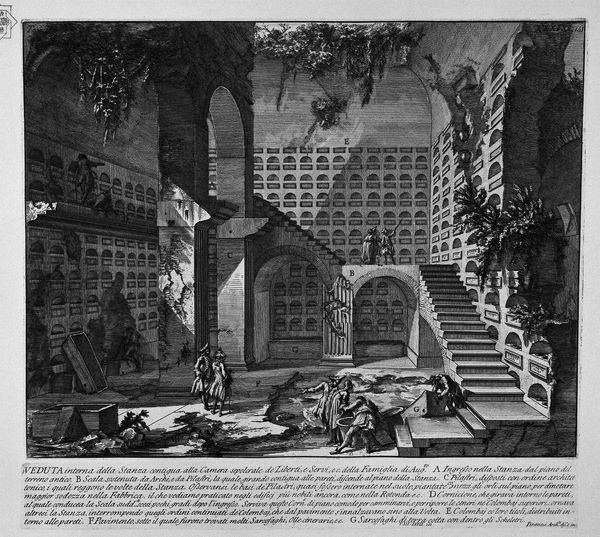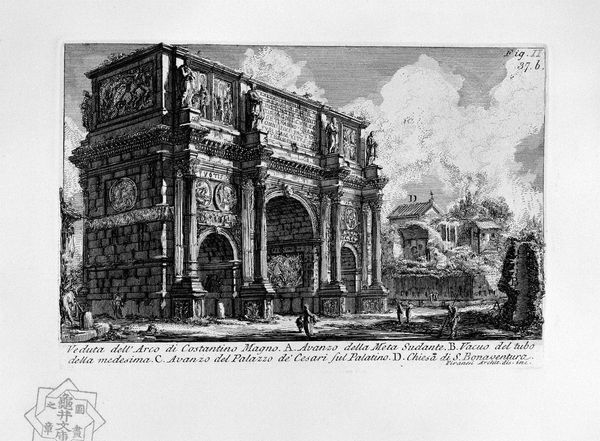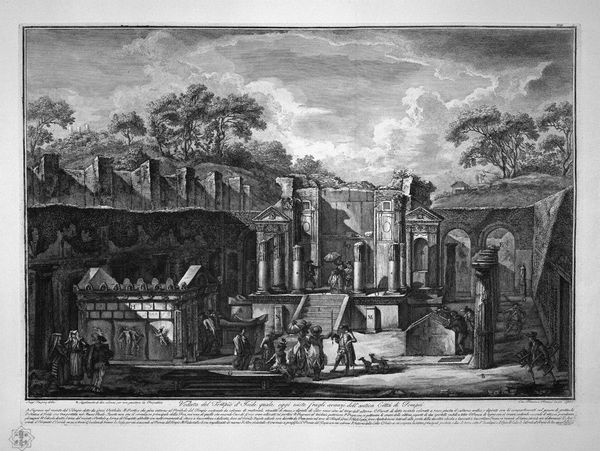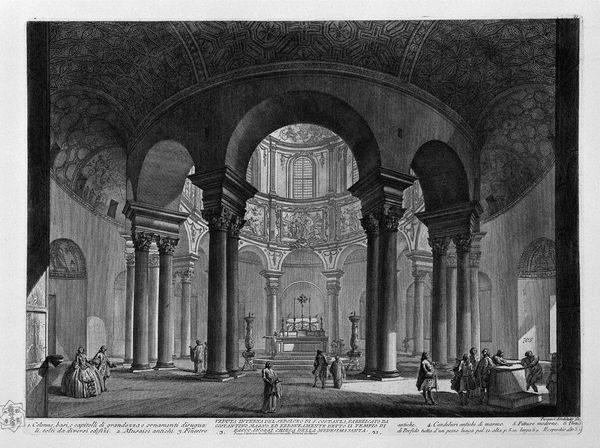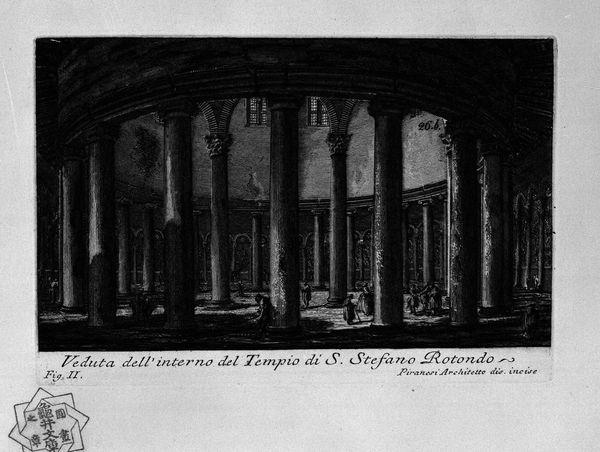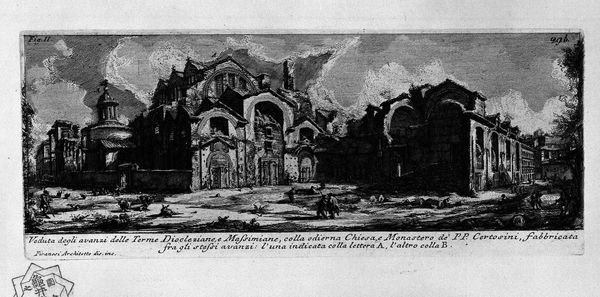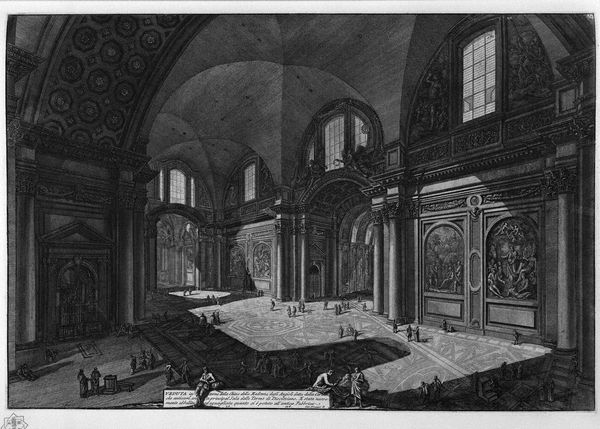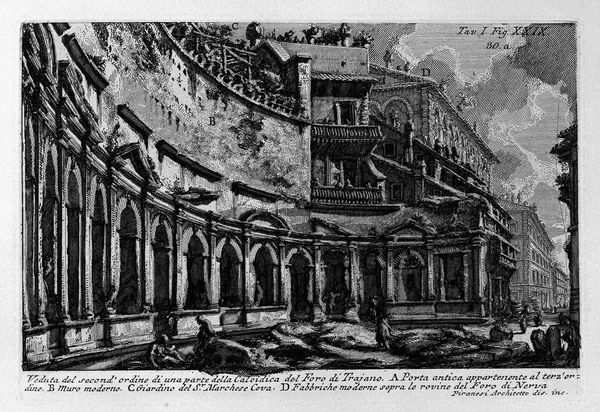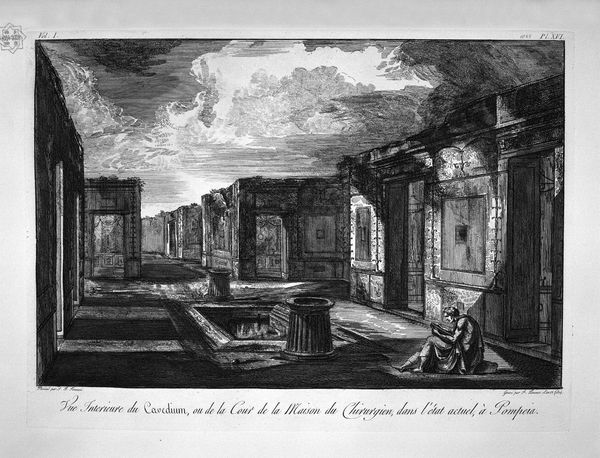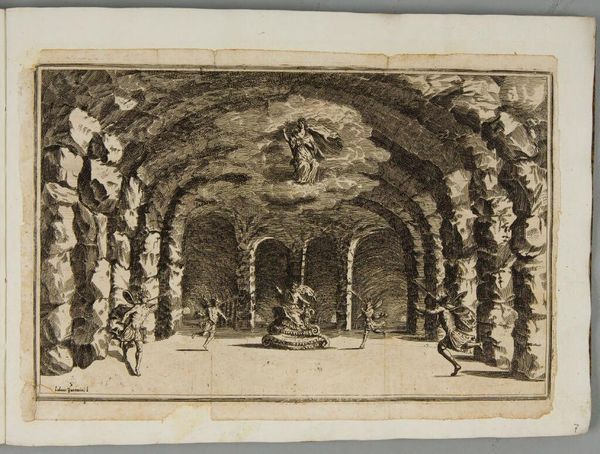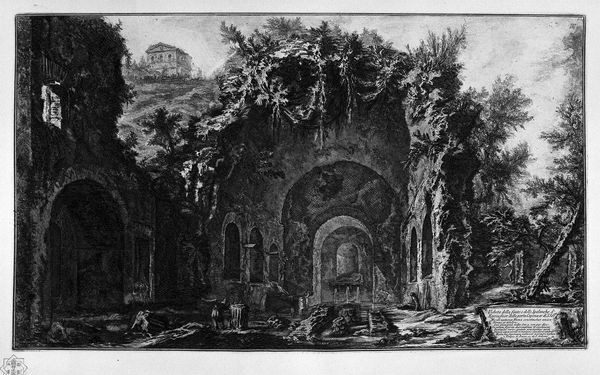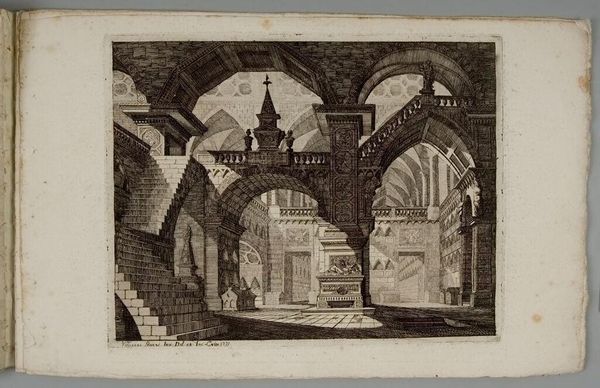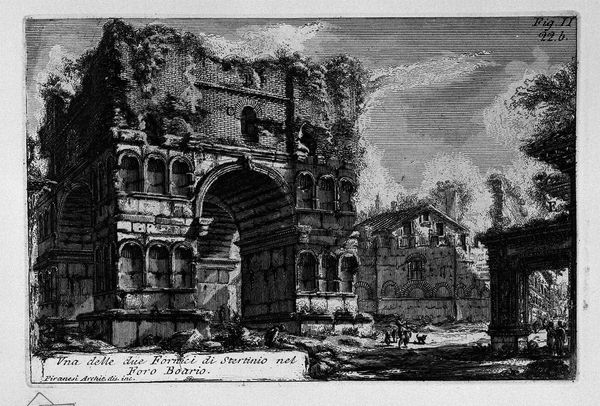
The Roman antiquities, t. 1, Plate XVIII. Tomb near Porta San Sebastiano. 1756
0:00
0:00
print, etching, engraving, architecture
# print
#
etching
#
landscape
#
arch
#
history-painting
#
engraving
#
architecture
Copyright: Public domain
Editor: So, this etching by Giovanni Battista Piranesi, titled "The Roman Antiquities, Plate XVIII. Tomb near Porta San Sebastiano," dates back to 1756. There’s almost a stage-like quality to it, yet the crumbling architecture feels… melancholic, even. How do you interpret the weight of history conveyed in this piece? Curator: Ah, Piranesi. He captures not just the grandeur, but the *idea* of Rome. Look at the archways. Arches, throughout history, have been symbolic gateways. Here, are they gateways to the afterlife? To memory? The arches receding into the distance imply a continuity – the persistence of Rome despite its decay. And note how light and shadow aren't merely descriptive; they become symbolic too. Where does the light fall and what remains hidden? Editor: That’s fascinating, that the light and shadows have purpose beyond simply being light and shadow! So you see these arches not only as part of the building, but a motif carrying all this symbolism and weight? Curator: Precisely. Consider too the ‘ruin’ as a motif itself in 18th-century art. Think about what it symbolizes – the passage of time, the rise and fall of civilizations. In this light, is the tomb *merely* a tomb? Or a commentary on the transience of power and glory? What memories are entombed within those stones? Editor: It’s amazing to consider. I initially saw a detailed architectural rendering, but it sounds like Piranesi offers a meditation on memory and cultural endurance? Curator: Exactly! His genius lies in layering historical accuracy with potent symbolism. Piranesi isn't just showing us a ruin; he’s prompting us to confront what remains, what endures and what is lost to time. What symbols did we not see at first glance?
Comments
No comments
Be the first to comment and join the conversation on the ultimate creative platform.
